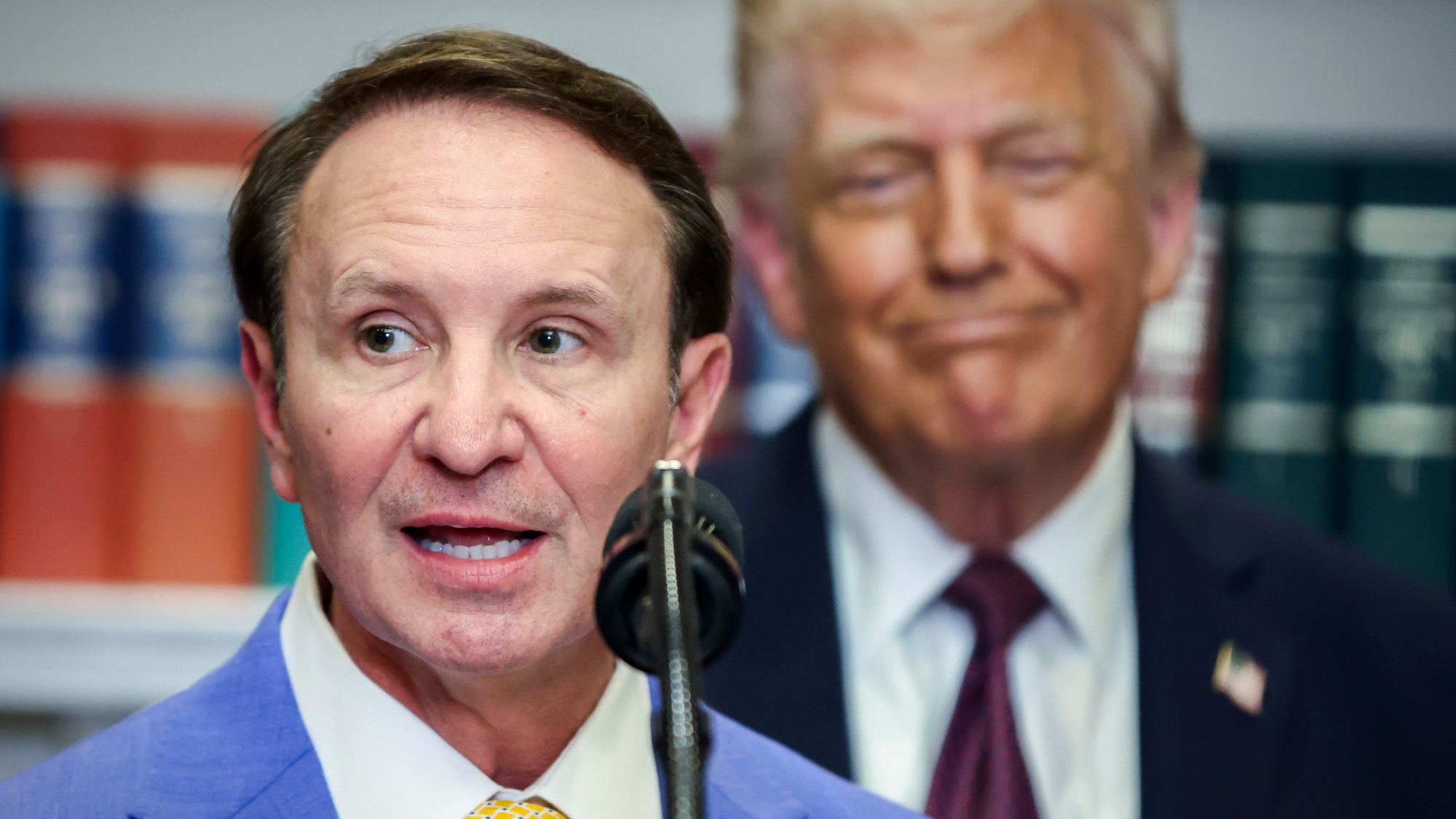How do presidential transitions work?
Donald Trump will take office on Jan. 20 after a two-month process


Donald Trump has been elected the 47th president of the United States, and will take office on Jan. 20, 2025, following an unexpectedly dominant victory over Vice President Kamala Harris. Before that, though, he will have to complete a process that has been undertaken by all of his predecessors: the transition to the presidency.
Trump's second go-around as commander-in-chief will see him work to implement his official platform, known as Agenda 47. This comes amid continuing controversy over the conservative brainchild Project 2025; Trump claims to have no affiliation with the project, though it overlaps heavily with his official agenda. The transition will also involve assembling a Cabinet and working to implement other agenda items.
What are the main parts of the presidential transition?
To implement a transition to the White House, the winning candidate will look to their transition teams, which are "responsible for organizing the personnel vetting, policy planning and management agendas to turn campaign promises into governing," according to the nonpartisan Center for Presidential Transition (CPT).
The Week
Escape your echo chamber. Get the facts behind the news, plus analysis from multiple perspectives.

Sign up for The Week's Free Newsletters
From our morning news briefing to a weekly Good News Newsletter, get the best of The Week delivered directly to your inbox.
From our morning news briefing to a weekly Good News Newsletter, get the best of The Week delivered directly to your inbox.
Both major candidates typically begin planning for a presidential transition in the months leading up to the election. However, the transition can't move ahead without the General Services Administration (GSA). This little-known government agency "provides support to eligible candidates, inter-agency transition teams, the presidential inauguration effort, and the outgoing president and vice president," according to the GSA website.
Meanwhile, the presidential transition teams work to help the president-elect with a variety of tasks. This includes selecting "more than 4,000 presidential appointees, including more than 1,200 who require Senate confirmation" and creating a "set of legislative, executive and agency proposals based on the campaign platform," said the CPT.
What happens when transitions get complicated?
The 2020 election showed that there were cracks in the transition process, particularly when it came to the GSA. At that time, Trump's "refusal to concede froze the ability of President Joe Biden's transition team to gain access to federal funding and information for several weeks," said Politico. The GSA eventually ascertained Biden's victory amid unsuccessful lawsuits from Trump challenging the election.
After that, Congress "passed a law in 2022 allowing multiple leading presidential candidates to get transition resources before a winner is determined in a contested election," said Politico. The law, the Presidential Transition Improvement Act, states that the GSA must begin the transition within five days of the election — and must do so for both candidates if neither has conceded. This means in future elections, a candidate's "campaign staff could still have access to key operations of government, including sensitive information, while courts and lawmakers battle over the final results," said The Washington Post.
A free daily email with the biggest news stories of the day – and the best features from TheWeek.com
The law "effectively mandates federal support and cooperation for both candidates to begin a transition," and "states that such support should continue until 'significant legal challenges' that could alter electoral outcomes have been 'substantially resolved,'" said The Associated Press. But in an election where one candidate launches a barrage of legal challenges, this means the "government potentially bestowing enough backing that both sides can prepare an administration until mid-December — only about a month before Inauguration Day on Jan. 20." This is unlikely to occur in 2025 given Trump's large-margin victory, but it raises questions about future elections.
In the past, it was "neither candidate gets the funding" until a winner was declared, but "now it's both," Derek Muller, a University of Notre Dame law professor, said to the AP. The dueling transitions "can last into mid-December. There's no question that's a risk. But I think it's a risk that they want to take."
Justin Klawans has worked as a staff writer at The Week since 2022. He began his career covering local news before joining Newsweek as a breaking news reporter, where he wrote about politics, national and global affairs, business, crime, sports, film, television and other news. Justin has also freelanced for outlets including Collider and United Press International.
-
 The Week’s big New Year’s Day quiz 2026
The Week’s big New Year’s Day quiz 2026Quiz of the Year How much do you remember about 2025’s headlines? Put yourself to the test with our bumper quiz of the year
-
 Is tanking ruining sports?
Is tanking ruining sports?Today's Big Question The NBA and the NFL want teams to compete to win. What happens if they decide not to?
-
 ‘Netflix needs to not just swallow HBO but also emulate it’
‘Netflix needs to not just swallow HBO but also emulate it’instant opinion Opinion, comment and editorials of the day
-
 Trump considers giving Ukraine a security guarantee
Trump considers giving Ukraine a security guaranteeTalking Points Zelenskyy says it is a requirement for peace. Will Putin go along?
-
 Why is Trump’s alleged strike on Venezuela shrouded in so much secrecy?
Why is Trump’s alleged strike on Venezuela shrouded in so much secrecy?TODAY'S BIG QUESTION Trump’s comments have raised more questions than answers about what his administration is doing in the Southern Hemisphere
-
 Vance’s ‘next move will reveal whether the conservative movement can move past Trump’
Vance’s ‘next move will reveal whether the conservative movement can move past Trump’Instant Opinion Opinion, comment and editorials of the day
-
 What have Trump’s Mar-a-Lago summits achieved?
What have Trump’s Mar-a-Lago summits achieved?Today’s big question Zelenskyy and Netanyahu meet the president in his Palm Beach ‘Winter White House’
-
 Biggest political break-ups and make-ups of 2025
Biggest political break-ups and make-ups of 2025The Explainer From Trump and Musk to the UK and the EU, Christmas wouldn’t be Christmas without a round-up of the year’s relationship drama
-
 Donald Trump’s squeeze on Venezuela
Donald Trump’s squeeze on VenezuelaIn Depth The US president is relying on a ‘drip-drip pressure campaign’ to oust Maduro, tightening measures on oil, drugs and migration
-
 Trump appears numerous times in new Epstein batch
Trump appears numerous times in new Epstein batchSpeed Read
-
 Danes ‘outraged’ at revived Trump Greenland push
Danes ‘outraged’ at revived Trump Greenland pushSpeed Read
